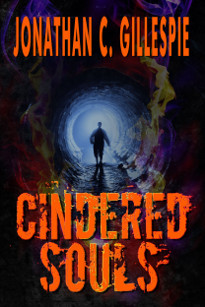I’ve always been hesitant to throw any words of advice on this blog, for a variety of reasons.
First, I’m not comfortable giving “advice” to other writers when I myself only have a handful of sporadic (thus-far) fiction sales. In my book, until I’m knocking back at least a sale every month or so — and have a pro sale or two — I don’t have much in the way of sound “advice” to offer. After all, if I did, I’d be selling consistently, right? Please note — this is an opinion about how I’d feel personally about the practice, not an insult to anyone currently doing so in whatever e-dia they chose to utilize. More power to you; it’s just not my bag, baby. So you can save any hate mail.
Also, I’ve seen what works well for one author fail miserably for others. And amongst the pros, you can’t even get a consistent opinion, as I’ve seen before. Every author finds a different method for their creation process.
So now you know why I don’t harp endlessly on here about the way you “should” be doing things. That said, what I can do, from time to time, is tell you what works for me.
And one of the things that works is the rule of three. It’s my own system I’ve developed for editing fiction. Because, in my experience, most folks are fairly competent writers, but it’s the editing phase that people tend to have a hard time working through. When a story gets bounced by an editor into the slush dung heap, odds are the smell wafting from said piece is the new-story shine so many authors get enamored with. Enamored with, mind you, to the point that they overlook flaws.
You see, if you’re like me, the first draft is modest, but usually contains massive problems. The effort ratio with my fiction used to be 70/30, with the first draft getting the lion’s share of the work. It’s gone to about 25/75 in recent years. Yes, your math is right. For each minute I spend actually typing, I’m spending about three post-editing. This includes first-readers, re-reads, and revisions. And how many revisions do I tend to do to a tale before I’m ready to send it into the wild? About three.
Now that number can vary quite a bit. “The Lifeboat” has been through roughly eight revisions. On the opposite end of the scale, “The Encroacher” went through exactly two, and the second draft was only minor clean-up. Neither of these have been published yet, but I did want to illustrate that their are exceptions.
But, really, I tend to find my stories not in decent shape until they’ve had at least three revisions. There’s a second side to this rule of three, as well.
See, the problem is that evil new-story shine I was telling you about earlier. A fresh story is an evil, insidious thing. I have the buzz from getting it done, the rush of feeling the fate of whatever characters I’ve crafted wash over my usually-cramped fingers. I’m in no state to be objective, and I’m usually not for days.
So I use a batch system. Here’s how it works: I write my first piece of fiction, then go through a first reader, then the second draft. The second draft takes care of the glaring stuff. I do not send the story into the wild at this point. Instead, it gets filed away.
I brainstorm or check my ongoing ideas scratch-doc and pick out something that’s compelling me to craft it. I go to work, creating a first draft for it, pass it to the first reader, and proceed onto the second draft. When it’s done, into the file it goes.
Then it’s time to repeat the process with the third story. When that story is done, I have three tales in a second-draft form. Now, I go back to the first story in the batch. By now, it’s been at least a few weeks. The new-story shine is gone, replaced by a feeling akin to an “oh, it’s you” moment. In other words, reality has set in. I’m cold. I’m objective. And I tear the tale apart.
Then I do the same with story two. Then three.
What I’m left with, after this process is over, is three tales I’ve been forced to put under the cold, but necessary, knife of objectivity. Ego does not belong in this phase, nor does arrogance. Characters run screaming. I’ve killed a few in this phase. Hyper-over-ultra-mega-wordiness evaporates. Entire paragraphs are cut and slaughtered. Sections sometimes get moved around pages apart.
But the end result, upon applying the rule of three, is three significantly stronger stories. Then I send the batch out into the wild.
And hope for three sales.
 Today I’m pleased to release another fiction collection. Five spine-tingling horror tales haunt Cindered Souls, now available for your Kindle, Nook, Kobo or app compatible with either of those three platforms, for only $1.99.
Today I’m pleased to release another fiction collection. Five spine-tingling horror tales haunt Cindered Souls, now available for your Kindle, Nook, Kobo or app compatible with either of those three platforms, for only $1.99.
Recent Discussion